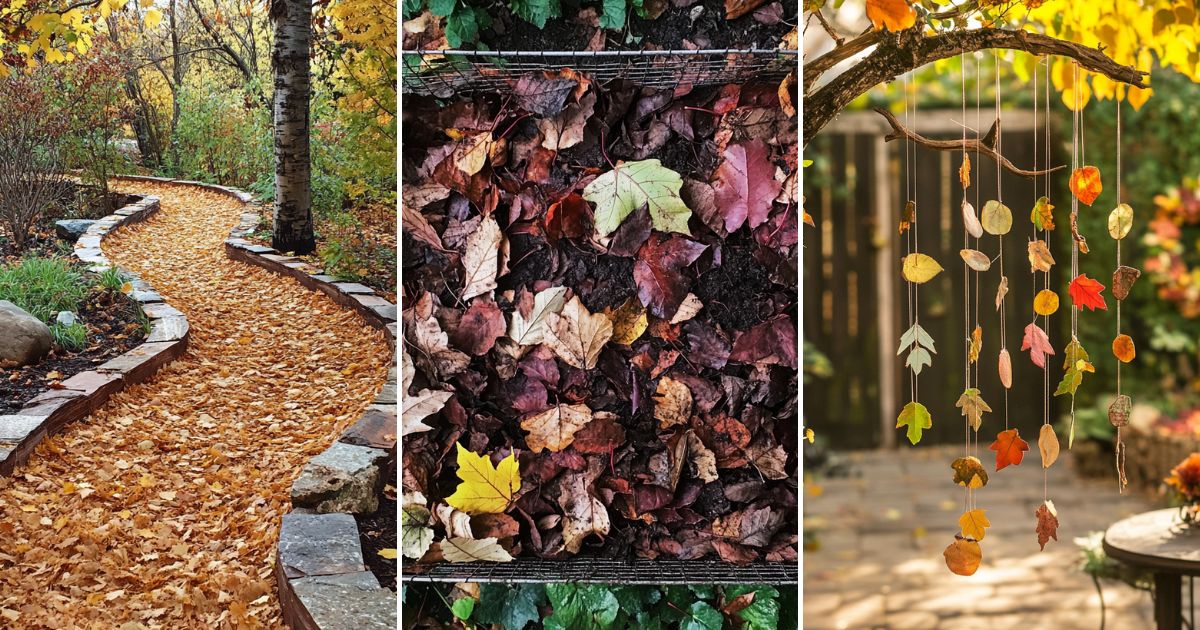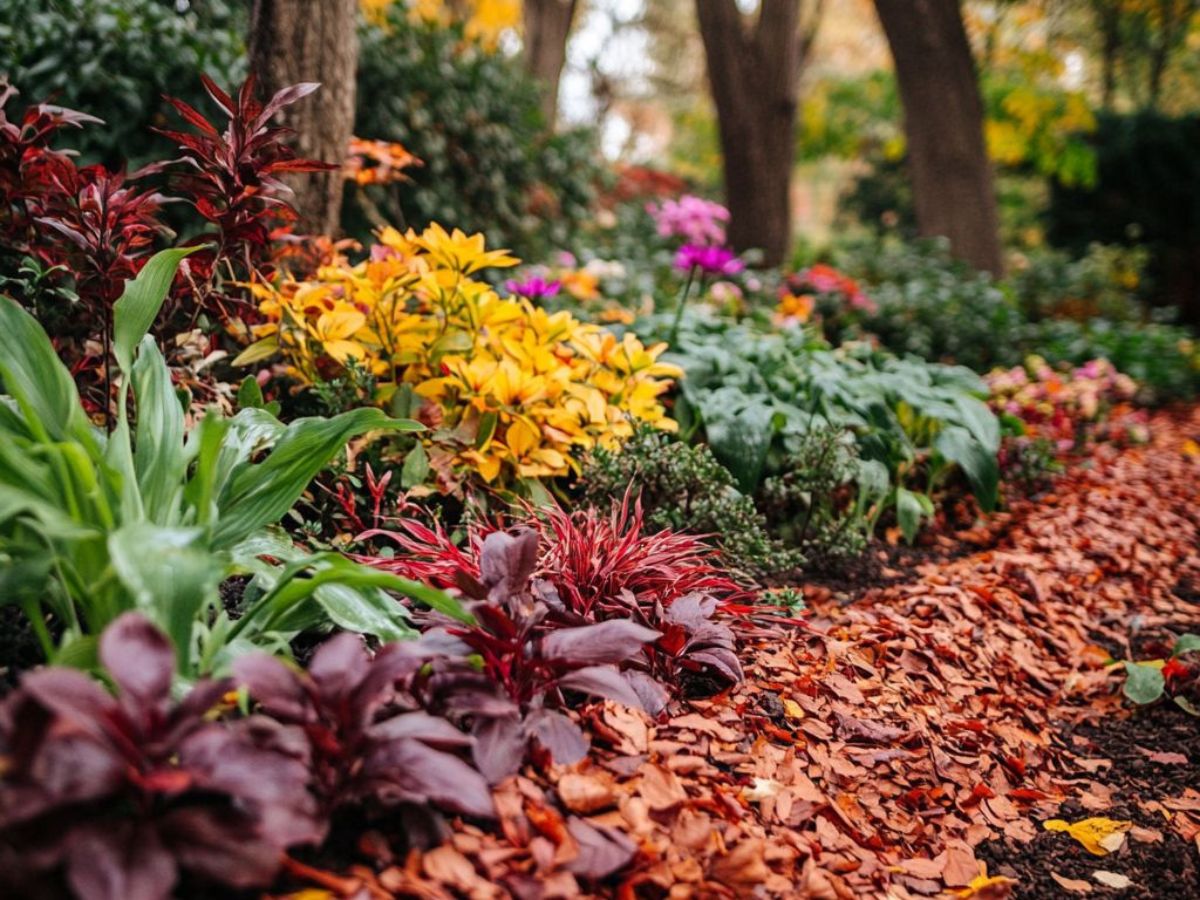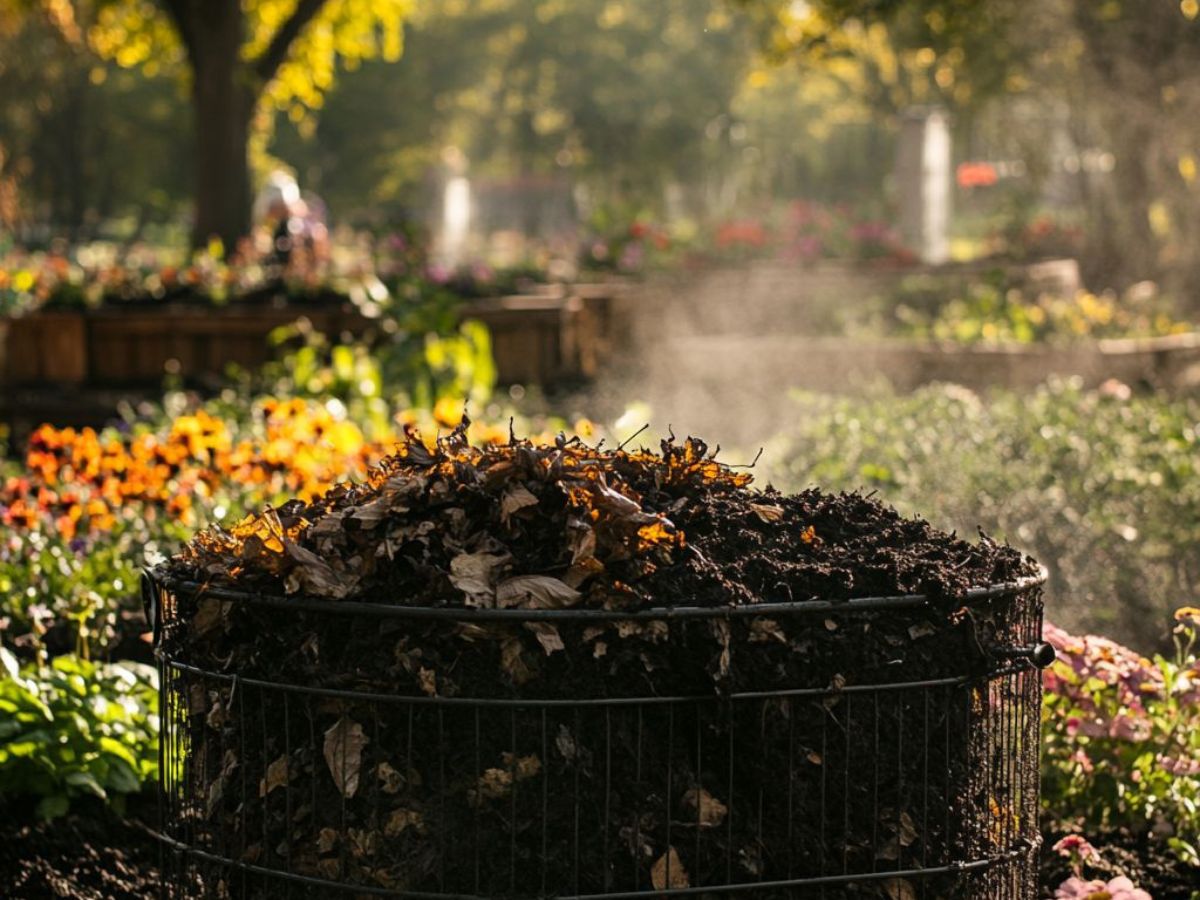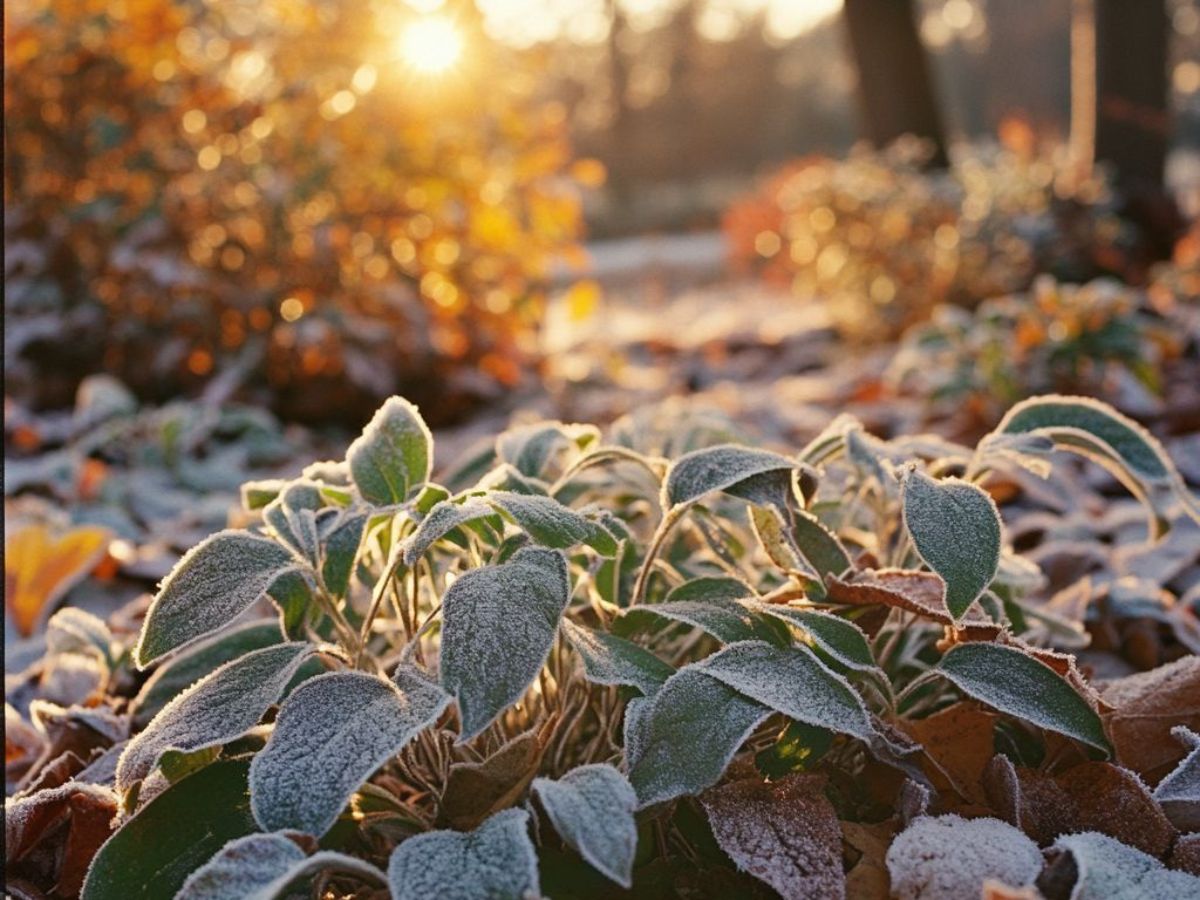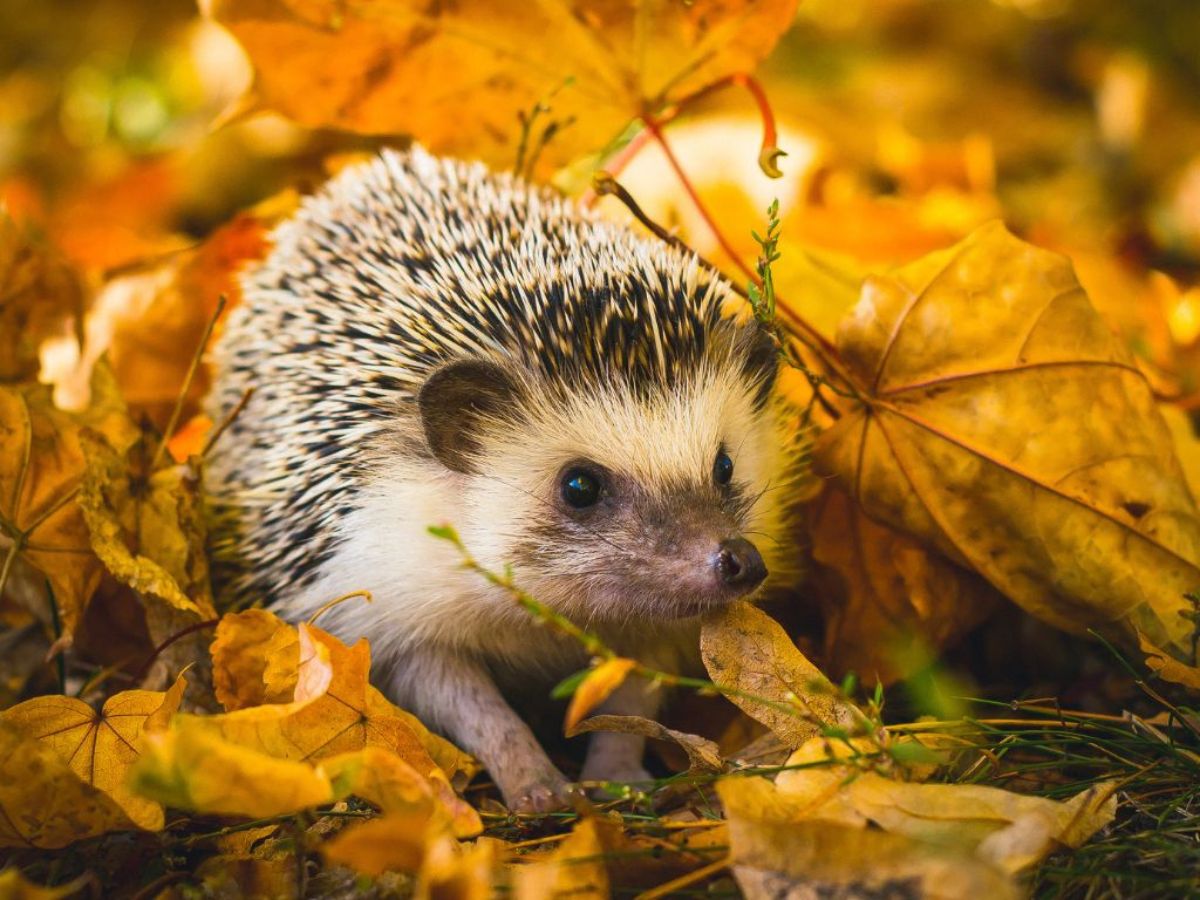Ah, fall—the season of cozy sweaters, pumpkin spice everything, and, of course, an abundance of colorful leaves. As they pile up in your yard, you might be tempted to rake them into bags and say goodbye until next year.
But hold on! Those vibrant reds, oranges, and yellows aren’t just yard waste. Fall leaves can be a fantastic resource for your garden. There are so many creative ways to use these leaves to enhance your outdoor space.
Instead of seeing fallen leaves as a chore, let’s look at them as an opportunity. With a little creativity, you can turn those autumn gems into something beautiful and beneficial for your garden.
Here are eight ways to make the most of your fall leaves this season.
1. Mulch to Protect and Nourish Your Soil
One of the easiest and most beneficial ways to use fall leaves is as mulch. Mulching is like giving your garden a cozy blanket for the winter.
By covering the soil with a layer of leaves, you protect plant roots from harsh cold temperatures while adding nutrients as the leaves decompose.
To do this, simply shred the leaves with a lawn mower or leaf shredder (shredding helps them break down faster). Then, spread a 2-3 inch layer around your garden beds, taking care to avoid piling leaves up against plant stems to prevent rot.
As the leaves decompose, they’ll enrich the soil with organic matter, which improves drainage, retains moisture, and invites beneficial microorganisms.
Using leaf mulch is especially helpful for flower beds, vegetable gardens, and around trees and shrubs. It’s an eco-friendly, free way to care for your garden and reduces the need for commercial fertilizers.
2. Compost for Rich, Fertile Soil
Leaves are a fantastic ingredient for composting. When combined with other organic materials like grass clippings, kitchen scraps, and garden waste, fall leaves help create rich compost that feeds your plants and improves soil health.
To make the most of your leaves in compost, mix them in at a ratio of about four parts leaves to one part green material (like fresh grass or vegetable scraps).
Leaves provide carbon, an essential component of the composting process. If you have a lot of leaves, shred them first to help speed up decomposition.
Composting may take a few months, but the payoff is worth it! By spring, you’ll have nutrient-rich, dark, crumbly compost ready to mix into your garden soil.
And here’s a bonus tip: earthworms love compost. They’ll come to feast on the goodness, aerating your soil and making it even healthier.
3. Leaf Mold: Nature’s Best Soil Conditioner
If you want an even simpler way to improve your garden soil, consider making leaf mold. Leaf mold is created when leaves break down over time, creating a crumbly, black material that acts as an excellent soil conditioner.
It doesn’t have as many nutrients as compost, but it’s fantastic for improving soil structure, which helps with drainage and water retention.
Making leaf mold is easy—just pile your leaves into a corner of the garden, or use a bin or wire enclosure. You don’t even need to shred them if you don’t want to (although shredding speeds up the process).
Water the pile occasionally to keep it moist, and in about six to twelve months, you’ll have rich leaf mold to work into your garden beds or potting mix.
4. Insulate Your Perennials for Winter Protection
Your perennials—those hardy plants that come back year after year—will thank you for a cozy layer of fall leaves as insulation.
Once the ground begins to freeze, spread a layer of leaves around the base of your perennials.
This acts as an insulator, protecting roots from freezing temperatures and preventing frost heaving, where plants get pushed out of the soil due to the freeze-thaw cycle.
When spring arrives and temperatures warm up, you can either rake away the leaves or leave them to decompose into the soil. This not only protects your plants during the winter but also enriches the soil for the next growing season.
5. Create a Leaf Mold Pathway for Rustic Charm
Imagine walking through your garden on a crisp autumn morning, the soft crunch of leaves under your feet. Why not turn that dreamy vision into a reality by creating a leaf mold pathway?
Using fall leaves to create a rustic garden path is both practical and aesthetically pleasing. As the leaves break down, they create a natural, soft mulch that’s comfortable to walk on.
To create a pathway, lay down a thick layer of shredded leaves on the desired path area. Over time, the leaves will break down into leaf mold, which will help suppress weeds while giving your garden a charming, rustic feel.
You can even edge the path with stones or logs to give it a more defined look.
6. Fill Raised Beds for Cost-Effective Gardening
If you’re setting up new raised garden beds and want to save on the cost of filling them with soil, fall leaves are your new best friend.
Instead of filling the entire bed with expensive topsoil, use a layering method known as “lasagna gardening” (no pasta required!).
Start by placing a thick layer of shredded leaves at the bottom of your raised bed, followed by layers of grass clippings, compost, and other organic material.
Over time, this organic matter will decompose, creating a rich and fertile environment for your plants. Not only does this save money, but it also puts those abundant fall leaves to good use.
7. Craft a Cozy Habitat for Garden Wildlife
Fall leaves provide more than just benefits for your plants—they can also create a safe haven for beneficial garden wildlife.
Pile leaves in a quiet corner of your yard to provide shelter for small animals like hedgehogs, toads, and beneficial insects. Many of these creatures hibernate through the winter and will appreciate a cozy place to hide from the cold.
You can also create leaf piles for overwintering insects like ladybugs and butterflies. By providing shelter for these helpful garden visitors, you’ll help maintain a balanced ecosystem, which means fewer pests and healthier plants come spring.
8. Use Leaves in Decorative Garden Projects
Finally, don’t forget that fall leaves can be just as beautiful as they are useful! Take advantage of their vibrant colors and shapes by incorporating them into decorative garden projects.
You can press leaves to make art or use them in outdoor tablescapes, wreaths, and garlands for a seasonal touch.
One fun idea is to create a fall leaf mobile or wind chime. Simply collect leaves with interesting shapes and colors, press them between heavy books to flatten them, and then attach them to a piece of driftwood or a branch with twine.
Hang your creation in the garden, and enjoy the beauty of fall long after the leaves have fallen.
Fall leaves don’t have to be something you dread every year when they start piling up on your lawn. With a little creativity and effort, you can transform these autumnal treasures into something that benefits your garden in countless ways.
So next time you head out with a rake, think twice before bagging up those fall leaves. Instead, put them to good use and let them enrich your garden in ways you never imagined.
It’s nature’s way of giving back, and your garden will thank you for it come spring!
With these eight creative ideas, you’re well on your way to making the most of fall’s bounty.
From mulch to compost to decorative projects, leaves are an untapped resource that can benefit your garden all year long. So, take a moment to appreciate the beauty and utility of autumn leaves—and let them inspire your next garden project!
